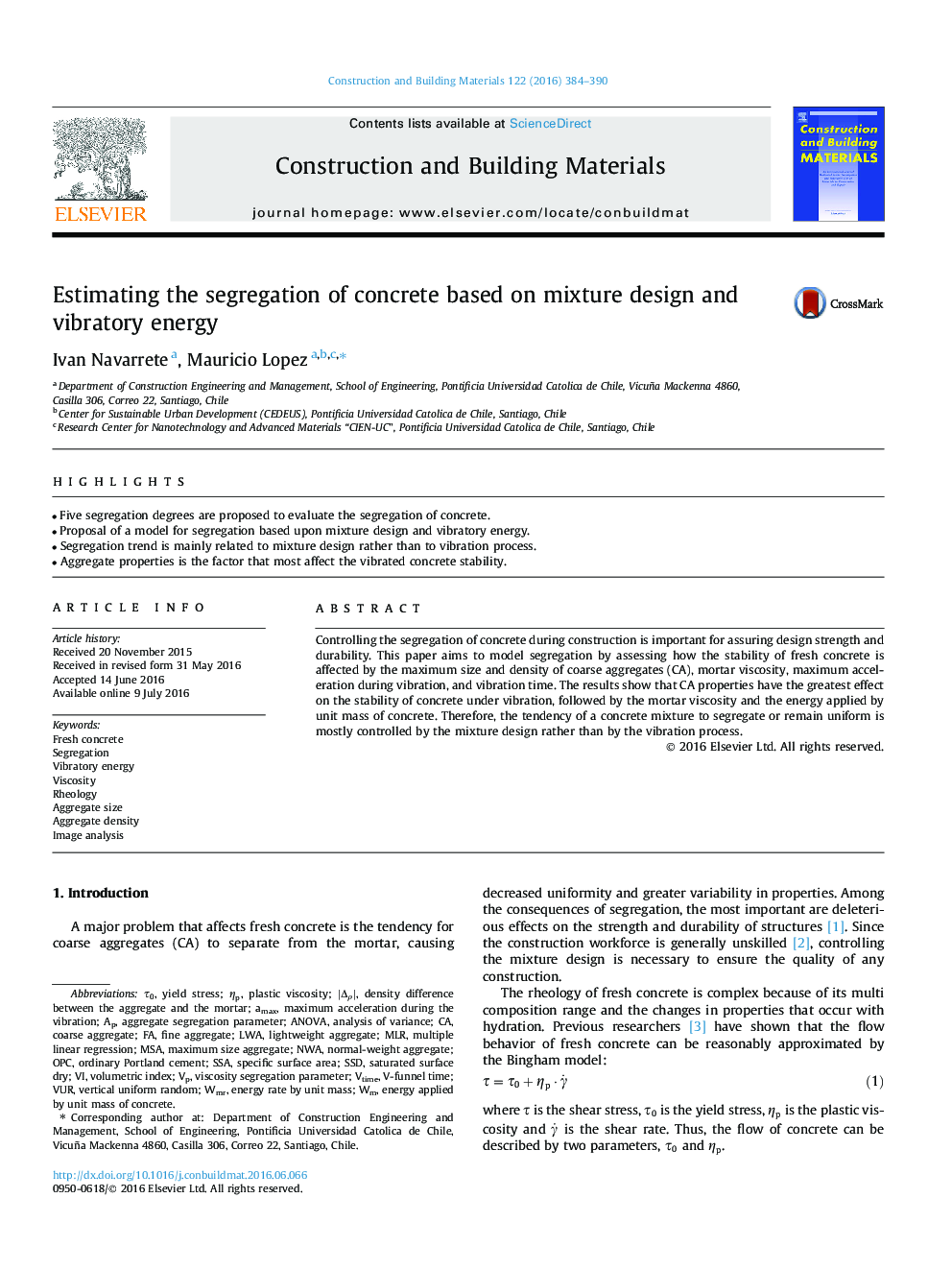| Article ID | Journal | Published Year | Pages | File Type |
|---|---|---|---|---|
| 6718101 | Construction and Building Materials | 2016 | 7 Pages |
Abstract
Controlling the segregation of concrete during construction is important for assuring design strength and durability. This paper aims to model segregation by assessing how the stability of fresh concrete is affected by the maximum size and density of coarse aggregates (CA), mortar viscosity, maximum acceleration during vibration, and vibration time. The results show that CA properties have the greatest effect on the stability of concrete under vibration, followed by the mortar viscosity and the energy applied by unit mass of concrete. Therefore, the tendency of a concrete mixture to segregate or remain uniform is mostly controlled by the mixture design rather than by the vibration process.
Keywords
saturated surface dryNWAOPCAmaxMSAτ0SSASSDMLRLWAVURFresh concreteImage analysisanalysis of varianceANOVAAggregate densityYield stressSegregationfine aggregateAggregate sizeRheologyMultiple linear regressionSpecific surface areaOrdinary Portland CementLightweight aggregatePlastic viscosityViscosityCoarse aggregate
Related Topics
Physical Sciences and Engineering
Engineering
Civil and Structural Engineering
Authors
Ivan Navarrete, Mauricio Lopez,
